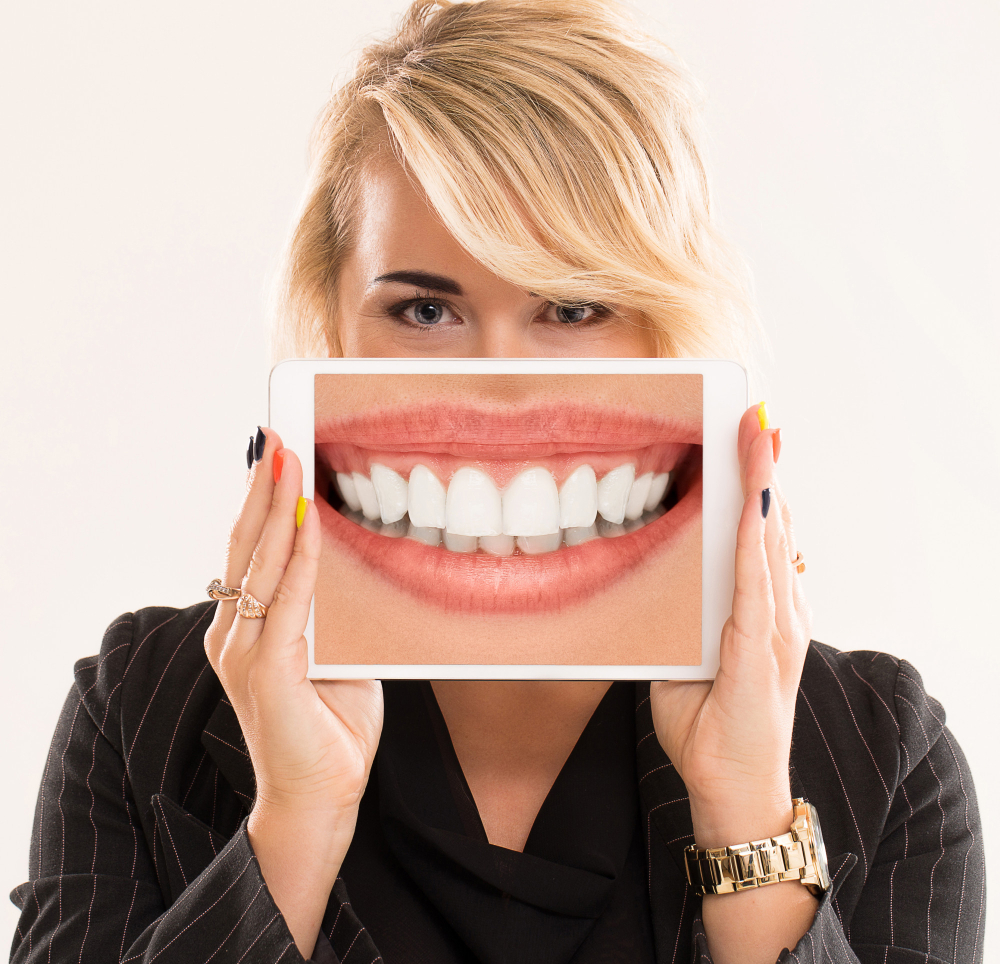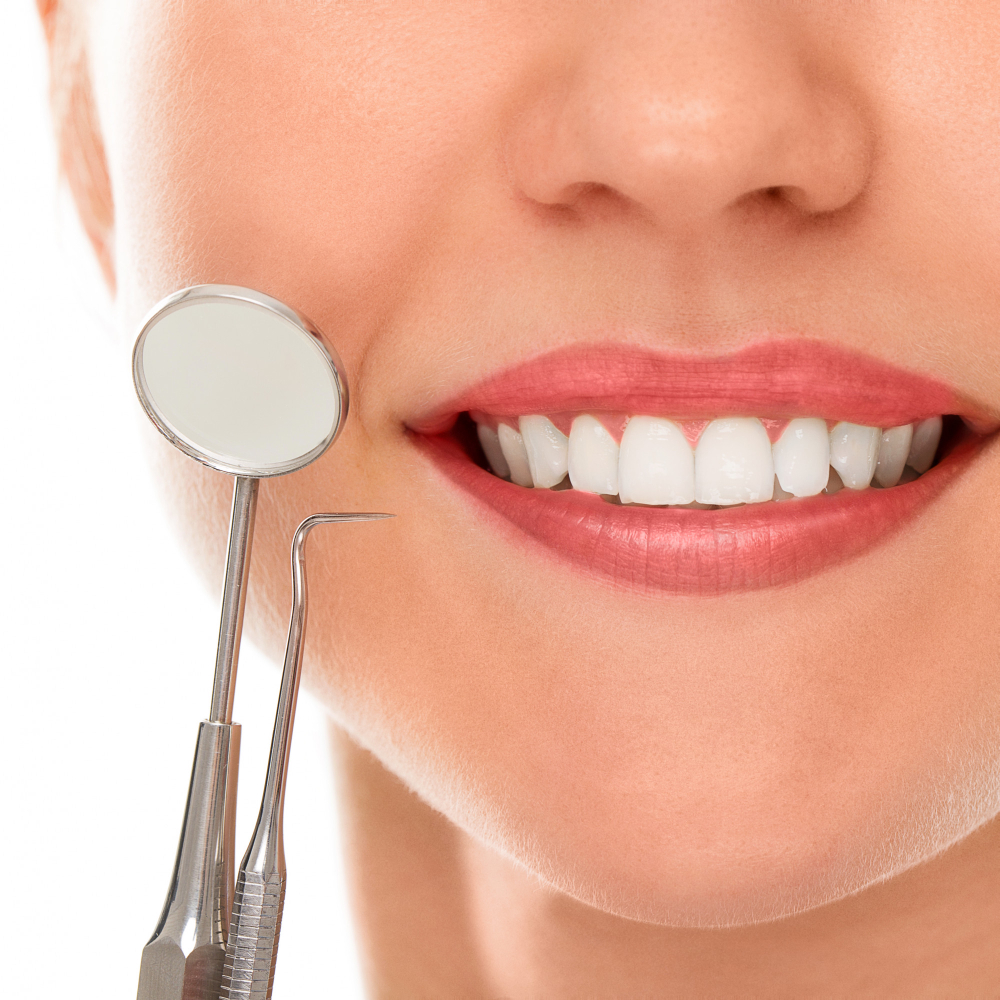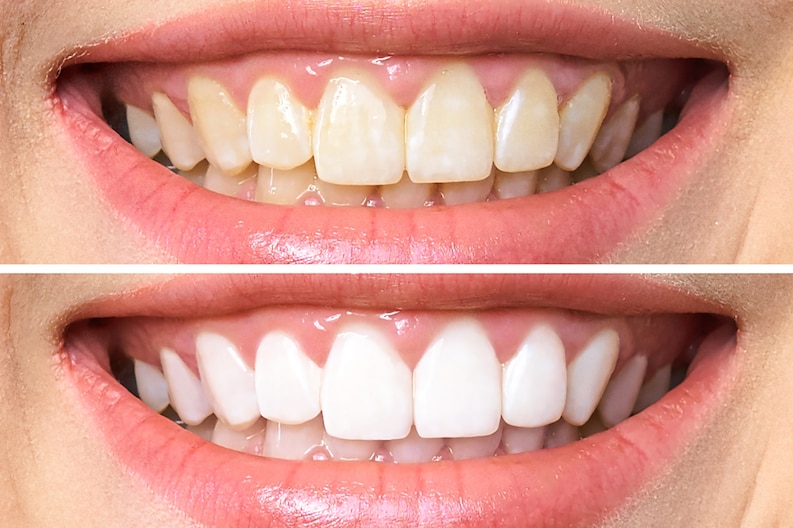Gum Contouring
Gum contouring is a cosmetic procedure that involves the removal of excess gum tissue and the reshaping of your gum line. Dentists often use this treatment to address the issue of “gummy smiles,” where there is an abundance of gum tissue covering portions of the teeth. This procedure is highly favored by individuals seeking noticeable and impactful improvements to their smiles.

What Causes Uneven Gums?
There are various factors that can lead to gums appearing either too low or too high. If your gums cover a significant part of your teeth, it can create an illusion of small teeth. This can be caused by genetics, specific health issues, or the usage of certain medications.
Gum recession is a condition where gum tissue recedes from a tooth, resulting in the teeth looking longer than they should be. This can cause dental issues like decay and tooth loss. Gum recession is also a possible indication of periodontal disease, which affects the gums and bone supporting the teeth.
When is it medically necessary?
Gum contouring is often performed for aesthetic reasons, although there are instances where it could be medically required.
If you suffer from periodontal disease, gum contouring might be considered as a potential treatment. However, your dentist will initially attempt to address the gum disease through non-surgical methods. This could involve prescribing antibiotics to eliminate bacteria and infection, or performing dental cleanings to restore the health of your gums.
If the aforementioned attempts prove unsuccessful, your dentist might suggest a procedure like pocket reduction surgery on the gums and adjacent bone to salvage a tooth. Alternatively, you might require a regenerative treatment aimed at regrowing impaired bone and gum tissue.
Gum contouring may be included in these treatments, and if it is, your dental insurance might cover all or some of the cost if it is considered necessary for your health. To determine what is covered and if there are any personal expenses, you should communicate with your dental insurance provider.
Conditions treated with gum contouring

Cosmetic gum contouring may be suitable for you if you possess:
- A smile that exhibits an excessive amount of gum tissue is known as a “gummy smile.”
- An uneven gum line.
- Gum overgrowth from wearing braces.
Who would be considered an ideal candidate for gum contouring?
Your dentist or periodontist will assess the condition of your teeth and gums, as well as analyze your smile line and overall facial balance, to determine if gum contouring is suitable for you. If not, they may suggest an alternative cosmetic dental procedure. Generally, gingivoplasty is deemed safe for the majority of adults, including elderly individuals.
Gum Contouring: What to Expect?
The surgery for gum contouring takes place in the dentist’s office. At present, dentists employ scalpels, lasers, and radiosurgery to carry out this procedure. It is advisable to consult your dentist to determine the most appropriate technique for your specific needs.
Prior to the surgical operation, it is essential for your doctor to discuss and outline the specific actions they will be conducting. In many instances, dentists may utilize a pen to visually demarcate the location of the newly modified gum line. This approach enables you to have a clear visual representation of the extent of gum removal or the anticipated reshaping of the gum line.
Numbing the area can be accomplished by applying a local anesthetic. In order to achieve optimal long-term outcomes, gum contouring may require the removal of bone at the front of the tooth’s root as well.
Does gum contouring hurt?
Before the procedure commences, you will receive a local anesthetic. This will desensitize your gums, ensuring that you do not experience any discomfort while the doctor operates on your mouth. However, it is normal to experience some sensitivity and loss of sensation after the procedure.
The level of discomfort varies based on the extent to which your gums needed to be reformed or extracted.
Following the surgical procedure, your doctor may recommend a painkiller, or you have the option to use non-prescription pain medication such as acetaminophen (Tylenol) or ibuprofen (Advil). While your doctor might advise against the use of aspirin due to its potential to induce bleeding.
After the procedure, you can alleviate pain and swelling in your mouth by using an ice pack or cold compress. It is recommended to apply the compress for 15 to 20 minutes periodically over the course of a couple of days.

What’s Recovery Like?
If a laser is being used by your doctor, stitches will not be necessary. However, if a scalpel is being used, stitches will be needed. In any case, the majority of individuals typically heal from gum contouring within one to two weeks. During this time, you can continue with most of your regular daily tasks, but your gums might be extra sensitive.
The most significant change during the recovery period is related to your eating habits. Similar to various laser cosmetic dentistry treatments, you will need to consume only soft foods, such as eggs, soup, or smoothies, to prevent any irritation to your gums. It is advisable to avoid spicy, highly acidic, or excessively hard foods as they may potentially cause scratches or inflammation on your gums.
Benefits of a Gum Contouring Procedure
Gum contouring provides advantages in both medical and aesthetic aspects. In essence, altering the shape of the gum line enhances the appearance of one’s smile and serves as a preventative measure against potential dental problems. The procedure encompasses several benefits as follows:
- Leveling the gum line: If the gum line is not even, it can give the appearance of crooked teeth. In cases where the teeth are not actually misaligned but braces are not required, contouring can be a solution. This procedure can help bring balance and uniformity to the smile.
- Decreases the visibility of the gum line: Having excessive gum tissue can cause a smile to appear gummy and can also make the teeth appear less vibrant. By removing this extra tissue, one of the outcomes is teeth looking whiter, thereby significantly enhancing the brightness of the smile.
- Reshaping the gum line is advantageous in preventing tooth decay. When there is an excess of gum tissue, it can act as a trap for food particles, making it more difficult to maintain proper oral hygiene. Consequently, the presence of bacteria increases, contributing to the development of tooth decay.
Treatment in Türkiye:
The medical staff of surgical teams, doctors, and consultants at REHABTÜRK can provide the best treatment options and free consultations, striving to stay up-to-date on the latest medical technologies and methods.
